Best Small 2 Person Tent for Backpacking & Camping 2024
Last Updated: April 24, 2024
Small 2 Person Tents for Mixed Backpacking, Travel, & Camping Use
A small 2 person tent for backpacking, camping, and travel is one of the most useful and versatile pieces of gear in an adventurer’s quiver. But can a crossover tent actually work for both activities? Our answer is emphatically, yes, and pretty well! And with minimal compromise on either end. This buyers guide exists to highlight the best small 2 person tents that function as well in the backcountry as they do in the front country.
When choosing a crossover, go with a backpacking design
Because backpacking demands a much stricter set of performance criteria than car camping or festival camping, all of our recommended crossover tents are lightweight backpacking designs at their core. None weigh more than five pounds. But that doesn’t mean sacrificing much in the way of comfort while car camping, or breaking the bank. Our recommendations are grounded in stat/feature/cost comparison, meta-analysis, and decades of backpacking gear review experience, and you can read more about our analysis preferences in the buyer info and pro tips section at the end of the article.
We have specifically chosen small 2 person tents that are taller, roomier, and more livable than the average tent for backpacking, while also being significantly lighter weight and more compact than the average car camping tent.
If you’re shopping for a dedicated backpacking shelter that won’t be used for car camping, then we highly recommend jumping over to our guide to the best tents for backpacking, or best ultralight freestanding tents, where you will find exclusively high performance lightweight and ultralight models. Or go even lighter with our guide to 1 person tents.
You make Adventure Alan & Co possible. When purchasing through links on our site, we may earn an affiliate commission at no additional cost to you. Here’s why you can trust us.
Quick Picks: Best Small 2 Person Tents For Backpacking & Camping
- Best All-Around: REI Co-op Half Dome SL 2+
- Best Performance: Big Agnes Copper Spur HV UL 2
- Best Under $300: NEMO Aurora 2P
- Best Under $250: Marmot Tungsten 2P
- Best Under $200: REI Co-op Trailmade 2
- Best Under $150: Kelty Grand Mesa 2
- Best Sustainability: NEMO Dagger OSMO 2P
- Best Lightweight: Big Agnes Tiger Wall UL 2
Best Accessories For Small 2 Person Tents
- Best Stakes: AnyGear 7075 Aluminum Tent Stakes
- Best Footprint: Gossamer Gear Polycryo Ground Cloth
- Best Repair Patch: Gear Aid Tenacious Tape Repair Patch Kit
- Best Sleeping Pad: Therm-a-Rest NeoAir XLite NXT
Tent Comparison Table
| Small 2 Person Tents | Price ($) | Weight (lbs) | Area (ft²) | Area/Pound (ft²) |
| Big Agnes Tiger Wall UL2 | 450 | 2.2 | 44.0 | 20.0 |
| Big Agnes Copper Spur HV UL2 | 550 | 2.7 | 47.0 | 17.5 |
| NEMO Dagger OSMO 2P | 530 | 3.4 | 54.1 | 15.9 |
| REI Co-op Half Dome Sl 2+ | 329 | 3.9 | 56.3 | 14.4 |
| REI Co-op Trailmade 2 | 179 | 4.3 | 50.8 | 12.0 |
| NEMO Aurora 2P | 299 | 4.6 | 50.2 | 10.9 |
| Marmot Tungsten | 249 | 5.0 | 46.2 | 9.2 |
| Kelty Grand Mesa 2 | 149 | 4.1 | 36.0 | 8.8 |
Best Small 2 Person Tent – All-Around
REI Half Dome SL 2+ Tent
The REI Co-op Half Dome SL 2+ Tent (shop now) is perhaps the best-selling backpacking tent of all time thanks to it’s incredible versatility, performance, and hyper-spacious interior, all relative to a very modest price. Half Dome’s value is simply best-in-class. And no matter where and how you choose to camp in the front or backcountry, this tent will keep you comfortably protected.
- Price: $349
- Weight: 3 lbs, 15 oz
- Material: Sil-Nylon, 40D floor, 30D fly
- Area: 33.8 ft² | Vestibule: 22.5 ft² | Interior Area/Pound: 8.6 ft²
- Length: 90″ Width: 54″ Height: 42″
- Pros: Affordable. Versatile. Freestanding. Very spacious. Good headroom. Easy setup. Fully-featured. Comes with footprint & stakes. Vents.
- Cons: Heavy-ish
Construction & Features
Half Dome’s sheer size calls out the loudest. With 33.8 ft² of interior floor plan, it is the largest of any 2 person backpacking tent we’ve reviewed, more than wide enough for two wide sleeping pads and 7.5 feet long to boot. Add onto that a whopping 22.5′ of vestibule space (also above average) and a 42″ ceiling height plus spreader bar. This is truly a tent you can comfortably hang out in that feels big inside.
The x-bar pole structure is storm-worthy and classic for a reason, it just works. What’s more, these poles are pre-bent to create even more verticality on the side walls, adding to the perception of livability. It is also extremely user-friendly, beginner-friendly, and easy to set up.
Half Dome has a solid set of features including an array of internal mesh pockets and hang loops which create excellent internal storage. We love the rainfly vents, and also rolling up both sides of the vestibule for maximum airflow on warm days. And it even comes with its own stakes and footprint to protect against abrasive surfaces. Plus REI’s generous warranty!
Okay, it’s not all gravy. At 3.9 lbs minimum trail weight, it is the heaviest backpacking tent in our buyer’s guide, and the heaviest tent we would considering packing for typical 3-season backpacking. But we have very high standards in that regard. In actuality, 3.9 lbs is fairly average when you take a zoomed out view of the entire backpacking tent marketplace.
Verdict
If you want a quiver-of-one tent that is spacious and comfy for car camping while also being compact and mid-weight for backpacking, then Half Dome is the perfect crossover tent for you. And at $349, you won’t have to break the bank on it either. This tent has so much to offer in terms of value, versatility, and livability that there’s no doubt as to why it’s such a best seller.
Best Small 2 Person Tent – Performance
Big Agnes Copper Spur HV UL2 Tent
If you want the best overall and most highly rated freestanding backpacking tent of all time, choose the Big Agnes Copper Spur HV UL2 (shop now). Compared to similar options, it’s smarter, taller, lighter, better ventilated, and more livable. Copper Spur handles all types of weather with ease. During warm rain, open the massive vestibule awnings to let a breeze in. On cold stormy nights, the near-vertical sidewalls and fully lofted ceiling create a excellent living area. Read more in our full-length Big Agnes Copper Spur Review.
- Price: $530
- Weight: 2 lbs, 11 oz
- Material: Sil-Nylon
- Interior: 29 ft² | Vestibule: 18 ft² | Interior Area/Pound: 10.8 ft²
- Length: 88″ Width: 52″/42″ Height: 40″
- Pros: Lightweight. Freestanding. Good headroom. Easy Setup. Awning. Internal pockets. Vents. Comes with stakes. Large vestibules.
- Cons: Expensive. Not ultralight.
Construction and Features
As gear reviewers, we tend to be unimpressed by most bells and whistles and prefer simple ultralight tents. But we make an exception for the Copper Spur’s features, especially the innovative awning vestibules which helps ventilate and create good vibes when you’re stuck inside during daytime rain. We prefer them open in all but the nastiest of weather, in which case each vestibule offers 9 sq ft of gear storage, notably larger than average.
We are also huge fans of the interior pocket array, especially the “3D Bin Mezzanine” at the foot end, which in conjunction with sidewall and ceiling pockets, easily keep all of your gadgets organized and accessible.
The frame is a sturdy and well-designed cross-bar-plus-spreader, a famously simple and storm worthy construction. The poles are pre-bent to create superbly vertical sidewalls, which maximizes the perceived space and livability inside the tent. Setup is as easy and intuitive as one could hope; literally anyone can figure it out. As backpacking tents go, user experience and livability are so high that we think this would also be a great small 2 person tent for car camping.
At 2 lbs 11 oz, it’s a bit too heavy to be considered ultralight, which is really our only dig against it, aside from the high price tag. But that said, it’s still very lightweight overall, and significantly lighter than the average backpacking tent.
Verdict
Add it all up and you get, what we consider to be the best freestanding backpacking tent that money can buy. It’s just such a smart design with so many great lightweight features. The Copper Spur HV UL 2 is great for beginners and experts alike. This is one helluva great tent.
Best Small 2 Person Tent Under $300
Nemo Aurora 2P Tent
With a peak ceiling height of 44″ and near-vertical exterior walls, the NEMO Aurora 2P is a voluminous and highly livable backpacking-to-car camping crossover tent. It’s the best option in that niche for under $300. NEMO is famous for quality craftsmanship, and the Aurora does not disappoint.
- Price: $299
- Weight: 4 lbs, 9 oz
- Material: 68d polyurethane polyester
- Interior: 31.8 ft² | Vestibule: 18.4 ft² | Area/Pound: 11.0 ft²
- Peak Height: 44″
- Pros: Spacious. Freestanding. Great ceiling. Near-vertical walls. Complimentary footprint. Versatile.
- Cons: Heavy (for backpacking).
Features
This small 2 person tent is loaded with excellent features. This includes a complimentary footprint, overhead spreader bar, internal mesh gear pockets, dog-floor-liner compatibility, light diffusion pockets, and rainfly vents.
It’s just so many creature comforts. In terms of livability, no tent does better than the Aurora when it come to head room over the head-end of the tent. Most tents focus on headroom in the center, but Aurora spreads it through very nicely.
Relative to its peers in this class, we feel it is superior in performance, quality, and livability to the $250 Marmot Tungsten which is smaller and heavier. But if you can shell out an extra $30, the REI Co-op Half Dome SL 2+ is big upgrade across the board for only a bit more money.
Weighing in at just over four and a half pounds trail-weight, it is heavier than we prefer to carry, and not what we would recommend as a dedicated backpacking tent.
Verdict
However, when you take into account its excellent comfort and front-country functionality, we think the NEMO Aurora 2P Tent is a great crossover design, and a very versatile and well-rounded as small 2 person tents go.
Best Small 2 Person Tent Under $250
Marmot Tungsten 2P Tent
Averaging at least 4.5 out of 5 stars in reviews wherever its sold online, the Marmot Tungsten 2P is clearly a user-favorite among small 2 person tents. There’s nothing fancy or innovative going on, it’s just a classic design done really well.
- Price: $249
- Weight: 5 lbs, 0 oz
- Material: 68d-70d Polyester Taffeta PU Coated
- Interior: 30.1 ft² | Vestibule: 16.1 ft² | Area/Pound: 9.25 ft²
- Peak Height: 42″
- Pros: Freestanding. Durable. Sturdy. Complimentary footprint. Reliable. User-friendly.
- Cons: Heavy (for backpacking).
Features
The Tungsten utilizes a simple aluminum cross pole design with a ceiling spreader. This frame is sturdy, simple, and reliable. Its 68D PU-coated polyester taffeta fly and floor is very durable, and waterproof. There are storage pockets on the interior.
At just over 30 sq ft, the size is a bit above average, and at just over 42″ peak height, it’s just a bit taller than average. But the fact that you’re getting a highly rated, slightly above average sized tent at a below average price is what makes the Marmot Tungsten 2P Tent so appealing.
In researching budget tents, we found a number of models from down market brands like ALPS Mountaineering, Kelty, and Mountainsmith that design tents with slightly superior stats for less money. However, they seem unreliable/too good to be true, and often had few to no reviews or were difficult to purchase.
We prefer the trustworthiness and storied history of the Marmot Tungsten when it comes to sleeping in the front or backcountry.
Lastly, we have to talk about the weight. At five pounds minimum trail weight, it’s as heavy as we’re willing to consider for backcountry tents. But we have high standards, and in the grand scheme of things, 5 lbs is only a bit above average when you take into consideration the entire marketplace of tents for backpacking.
Verdict
This one feels like an obvious choice for best crossover, and it is an exemplary among small 2 person tents for $250 or less. The Marmot Tungsten is beloved by users and solid in terms of performance, which makes for a great value, long lasting shelter.
Best Small 2 Person Tent Under $200
REI Trailmade 2 Tent
The REI Co-op Trailmade 2 with footprint is about as much backpacking tent as you could possibly hope to get from a reputable outdoor brand for under $200. REI has really upped their backpacking collection lately, and they’ve been especially dominate in the budget backpacking tent department thanks to the Trailmade Collection. Shop now.
- Price: $179
- Weight: 4 lbs, 4 oz
- Material: Coated Polyester floor and fly.
- Interior: 31.7 ft² | Vestibule: 19.1 ft² | Interior Area/Pound: 7.5 ft²
- Length: 88″ Width: 52″ Height: 40″
- Pros: Very affordable. Spacious floor plan. Freestanding. Vents. Complimentary footprint & stakes. Internal pockets.
- Cons: Heavy. No spreader bar.
Construction & Features
There is literally nothing fancy about the Trailmade 2. Structurally speaking, it’s built with a cross pole aluminum frame, no spreader bar, and with unspecified coated polyester fabric.
Perhaps where this backpacking tent shines the brightest is it’s spaciousness relative to cost. At nearly 32 sq ft of interior space, it’s the second largest in our guide and well above average. The 52″ width in particular is exceptional, with more than enough for room for two wide sleeping pads.
Trailmade is not exactly feature-rich. There are some interior pockets, and like many small 2 person tents in this class, it comes with a footprint and stakes. But beyond that, there just isn’t much else to write about. But within the sub-$200 tent category, having two doors and two vestibules is in and of itself a feature, perhaps the best of all.
We nod to Trailmade as the pinnacle of entry level tent design. It is versatile and comfortable enough for car camping, and just lightweight enough for backpacking.
Verdict
The combination of its larger-than-average interior with a significantly-less-expensive-than-average price tag makes the Trailmade 2 a killer value, and an excellent entry-level backpacking tent.
Best Small 2 Person Tent Under $150
Kelty Grand Mesa 2 Tent
Astoundingly affordable, the Kelty Grand Mesa 2 Tent proves that you don’t need anything fancy to go backpacking. This small 2 person tent is about as simple as it gets, but because it’s not doing anything fancy, it actually only weighs four pounds, which is less than most tents in the $200-$300 price range. Love the value.
- Price: $149
- Weight: 4 lbs, 1 oz
- Material: Coated 68D Polyester
- Interior: 30.0 ft² | Vestibule: 6 ft² | Area/Pound: 8.8 ft²
- Peak Height: 43″
- Pros: Very affordable. Decent headroom. Easy set up.
- Cons: Single door, single vestibule. Heavy (for backpacking).
Features
Kelty is a classic outdoor brand with a storied history, and they’ve been making reliable x-frame designs for decades. This one is covered in 68d polyester rain fly and floor, which is definitely more durable than average, but also heavy.
Unlike the other small 2 person tents on our list, Grand Mesa saves weight and production costs by only designing in a single door and vestibule. We’ll admit this is a big sacrifice in user-friendliness, but it is still tolerable and won’t have a major impact on most trips.
We would definitely prefer a tent with more vestibule room if we knew it would be raining. Considering a $30 upgrade to the REI Trailmade 2 for a small 2 person tent with two doors and two vestibules.
Despite cost cuttings, Grand Mesa actually has a pretty high ceiling. 43″ peak height is a taller than average, though some of the perceived livability is lost by the sloping side walls. No pre-bent poles. No spreader bar.
Verdict
Honestly though, we’re kind of surprised how good this small 2 person tent is considering it only costs for $150. It’s surprisingly above average in a number of ways, and we think Grand Mesa will get the job done best if you want to start backpacking for the lowest possible price.
Best Small 2 Person Tent – Sustainability
NEMO Dagger OSMO 2P Tent
The NEMO Dagger OSMO 2P Tent goes to show that you needn’t choose between sustainability and performance.
- Price: $530
- Weight: 3 lbs, 6 oz
- Material: 100% Recycled Sil-Nylon/Poly Blend
- Area: 31.3 ft² | Vestibule: 22.8 ft² | Area/Pound: 15.9 ft²
- Pros: Eco-Friendly design. Spacious interior. Good headroom. High performance fabric. Lots of features. Free standing.
- Cons: Average weight.
Features
The innovative OSMO fabric is made from certified 100% recycled materials, and utilizes a proprietary blend of nylon and polyester to increase strength and water repellency, while decreasing sag and stretchiness when wet. We love that brands are pushing the envelope when it comes to sustainability, and NEMO is leading the pack.
The OSMO fly is draped around a headroom enhancing pole structure designed to create near vertical walls, and we appreciate how the top spreader adds lateral ceiling height. The vestibules have nice vents and are impressively large and protective, offering lots of exterior space to store equipment.
For a small 2 person tent, the NEMO Dagger 2P has features and add-ons galore. Most importantly of all, the NEMO Lifetime Warranty. But we also love the internal storage pockets with light diffuser. The Landing Zone vestibule storage tubs are an interesting idea. From a backpacking perspective, they’re probably unnecessary.
But from a camping perspective, they’re useful and excellent for keeping gear dry on wet ground. The Divvy Cube storage is also a nice system.
Verdict
The NEMO Dagger OSMO is an innovative, all-purpose small 2 person tent that’s just as home in the front country as it is in the backcountry. It’s a bit on the splurgy side, but if you want one high quality home-away-from-home that can handle everything nature asks of it exceptionally well, this is it.
Best Small 2 Person Tent – Lightweight
Big Agnes Tiger Wall UL 2 Tent
The Big Agnes Tiger Wall UL2 is most notable for its impressive area-to-weight-to-price ratio. Tiger Wall offers backpackers the same livability and features of a tent that’s twice as heavy, and $100 more expensive. Shop now.
- Price: $450
- Weight: 2 lbs, 3 oz
- Material: Coated sil-nylon ripstop
- Interior: 28 ft² | Vestibule: 16 ft² | Interior Area/Pound: 12.8 ft²
- Length: 86″ Width: 52/42″ Height: 39″
- Pros: Very lightweight. Great value. Fully featured. Internal pockets. Comes with stakes.
- Cons: Semi-freestanding. Not ultralight. Modest wind-resistance. Ground sheet recommended.
Construction & Features
The Tiger Wall achieves its phenomenal lightweight performance thanks to the semi-freestanding architecture. An 8.7mm DAC Featherlite aluminum pole traces from foot end, over the center where it is bisected by a spreader bar, and forks to meet the head-end corners. The foot end corners do not have pole support and much be tensioned off with stakes to achieve a proper pitch. It’s a tremendously low asking price to achieve its incredibly low weight and high performance.
While this weight-saving architecture is very effective at its primary goal, it does leave the tent wanting for a bit more sturdiness and structural integrity. We would describe the Tiger Wall UL2 as fully adequate when faced with everyday backpacking conditions and lightly-to-moderately stormy weather. But for strong wind in particular, we don’t recommend Tiger Wall.
Turning inwards, Tiger Wall has great livability thanks to the steep side walls and head end, full-size vestibules, and four internal mesh pockets. All of those elements help to compensate for the slightly-smaller-than-average 28 ft² interior floor plan. Notably, we prefer Tiger Wall to the NEMO Hornet because it has more useable headroom.
Verdict
The semi-freestanding pitch and average-but-not-exceptional wind resistance are small prices to pay for a tent this light and livable. Tiger Wall is about as close as one can get to ultralight without ditching the convenience of poles. This is truly an exceptional backpacking tent for a great price and we recommend it highly.
Best Accessories for Small 2 Person Tents | Full Reviews
Best Tent Stakes
AnyGear 7075 Aluminum Tent Stakes
The starter stakes that came with your tent are okay. But we prefer these inexpensive & far stronger Y-stakes, the AnyGear 7075 Aluminum Tent Stakes, as they make tent pitching easier and more secure in rocky, rooty dirt.
- Price: $0.66
- Weight: 0.5 oz
- Material: Aircraft-grade Aluminum Alloy
- Pros: Head never bends. Three grip notches. Affordable. High visibility. Great holding security.
- Cons: Average weight.
Features and Verdict
The ANYGEAR 7075 Aluminum Stakes have only a single notched rib at the head making them extremely resistant to bending and damage when pounding in with a rock. And the 3-Latch point heights allow you to securely attach the cord even if they are not pounded all the way in.
These tent stakes have a pre-attached cord to make them easier to pull out. And the cord is reflective to keep you from tripping on them during the night. Finally, ‘Y’ stakes have greater holding power than aluminum v-stakes, titanium shepherd stakes, and round carbon stakes. Since upgrading to this type of stake, we’ve never looked back. Highly recommend to all backpackers and campers.
Best Tent Foot Print
Gossamer Gear Polycryo Ground Cloth
To protect your backpacking tent floor from abrasive surfaces, we recommend the Gossamer Gear Polycryo Ground Cloth. It’s much, much lighter than the sil-nylon/poly tent footprint that manufacturers provide, and still protects against puncture and scratches.
- Price: $11
- Weight: 3.7 oz
- Material: Cross-linked Polyolefin Film
- Area: 48.0 ft² | Area/ounce: 13 ft²/oz
- Pros: Very affordable. Ultralight. Protects tent floor from punctures.
- Cons: Only lasts 1-3 hiking seasons.
Features and Verdict
This is the preferred footprint of ultralight tents, and should last multiple hiking seasons. For solo tents, cut off 1/3 of the sheet to save weight and bulk.
While it’s very puncture resistant, we find that it becomes more susceptible to lateral tearing as it ages. Still though, a great inexpensive piece of smarter backpacking gear.
Best Tent Repair Patch
Gear Aid Tenacious Tape Repair Patch
For small to mediums sized rips and tears, we prefer using a Gear Aid Tenacious Tape Repair Patch, precut in a hexagonal shape.
- Weight: 0.1 oz (once applied)
- Price: $5
- Technology: Tenacious Tape
- Cons: Long lasting. Works in backcountry. Very adhesive. Waterproof.
- Cons: Requires smooth surfaces
About
When applied to a smooth, relatively clean surface, the repair patches are incredibly long lasting and durable. The adhesive is significantly stickier than duct tape. The patch itself is waterproof and will prevent leaks. We recommend the hex shaped patches because the corners are less sharp than rectangles, thus less prone to catching and peeling.
These repair patches work on tents, backpacks, rain jackets, hiking clothes, and pretty much any other fabric item that can be laid flat and smoothed out. However, they won’t work well on textured surfaces, like shoes or mesh.
Verdict
Nonetheless, Gear Aid makes a best in class product that should be a staple in every hikers repair kit, especially those who use ultralight tents with thin fabric. We always carry them and you should too.
Best Sleeping Pad
Therm-a-Rest NeoAir XLite NXT Sleeping Pad
New for 2023, the Therm-a-rest NeoAir XLite NXT (shop now) is currently the undisputed best performance sleeping pad for backpacking that money can buy, and it has no equal. It is statistically superior in almost every way and across all measurements when compared to all other sleeping pads. Read more in our full-length Therm-a-Rest NeoAir XLite NXT Review.
- Price: $210
- Weight: 13 oz
- R-Value: 4.5 | R-Value/Weight: .35
- Thickness: 3”
- Fabric: 30d
- Sizes: Regular Short, Regular, Regular Wide, Large
- Pros: Comfy. Thick. Ultralight. Very High R-Value-to-weight.
- Cons: Expensive.
Features
NXT’s R-Value of 4.5 is one of the highest among three season pads, and with a weight of only 13.0 oz, it’s also one of the very lightest. It’s so far ahead of the pack, that compared to the second best sleeping pad, its R-value-to-weight ratio is 24% higher.
XLite NXT is no slouch on comfort either. Now with an additional half inch of thickness compared to the original, XLite NXT is 3” thick, which means you can basically ignore small roots and divots in the ground, and side and back sleepers will be happier. And what’s more, compared to previous editions, it’s designed to be much quieter.
While it’s definitely still a bit crinkly, we’d describe the overall volume as average and acceptable. At time of publishing, Therm-a-Rest states it is six times quieter than the original XLite on their homepage. While it did get noticeably quieter, our experience did not indicate 6X.
Inflation with NXT can be a bit of a chore considering how thick the pad is. But the “winglock” valve is excellent, and you don’t have to constantly tighten it in between breaths or pumps. The 30D fabric is very durable, and you shouldn’t have any problems so long as you aren’t using it on scratchy surfaces.
Verdict
This is the best overall sleeping pad for backpacking that has ever been manufactured, and we can’t wait for you to try it out! Enjoy!
Area Per Pound of Tent Weight
This a key factor to evaluate and compare small 2 person tents. Our area per pound of tent weight gives you a good idea of how light a tent really is. That is how much volume/livable space do you get for each pound of tent weight carried. For the tents in this guide area ft/lb values range from around 8-13 ft2/lb for the more budget/camping oriented tents, to over 23 ft2/lb for the more ultralight/backpacking oriented tents.
That is, the ultralight tents are 1/2 the weight for the same livable area, of course you’ll pay a bit more for the UL tent.
For comparison, a generic camping tent available at Walmart and sporting good stores, the Coleman Sundome 2 Person Tent, weights 7.2 pounds and has 35 ft2 of area. That calculates to a meager 4.6 ft2/lb — about 1/2 to 1/3 of the performance of the “Budget-Friendly Small 2 Person Tents” in this guide like the REI Co-op Trailmade.
Price: What You Get by Spending More on a small 2 person tent
At this point with backpacking gear, spending more often means a lighter tent without losing durability. More expensive small 2 person tents are often constructed with pricier fabrics which have both light weight and high durability.
More expensive tents will often last longer, have a better space-to-weight ratio for livability, and have more features such as multiple doors and vestibules.
Be a smart shopper though: Are you paying a higher sticker price for a fancy name brand? Or will a tent from a lesser-known company provide the same durability and quality? Be sure to understand the specs (volume, material, weight) and read reviews for livable space and setup tips before buying. You can often save money without sacrificing too much in the way of construction quality.
Tent Weight Explained
Even small 2 person tents can be one of the heaviest items in your backpack. As such, it’s a great place to save a ton of weight. For a freestanding tent, you are carrying a tent body, a tent fly, poles, and stakes. But! Pairs of hikers can often split up a tent to distribute the weight. For freestanding tents, it’s easy to divide the fly and tent body, and choose who carries the poles. Most hikers should aim for carrying no more than 2.5 pounds of shelter weight per person (and those going ultralight backpacking might aim for 1.5 pounds or less per person).
Packaged Weight vs Minimum Weight
When comparing small 2 persons tents online, you’ll see references to packed weight and minimum weight (or trail weight) on many manufacturers and retailers sites. This buyers guide always refers to minimum/trail weight, FYI.
Packed weight is referring to how much the entire tent package weighs when you purchase it, including tent body, fly, poles, stakes, guy lines, compression sacks or stuff sacks, footprint, and anything else included in the package. Basically, how much it weighs when it shows up at your door.
Minimum trail weight can vary in what it’s referencing, but typically means the weight of the tent body, fly, and poles. This allows for easy comparison between models. You’ll likely need stakes and some guy lines as well and may wish to carry a stuff sack. Assume the actual weight of what you’ll be carrying is somewhere between minimum weight and packaged weight — but with good stakes, closer to the minimum weight.
Interior Space: Floor Area, Peak Height, and Walls
Interior space (or “livable” space) means the space you’ll be sleeping in, changing clothes in, and ultimately will be able to determine how comfortable you’ll be existing in this space, whether or not you share it with another person. The steepness of the walls and peak height of the roof also contribute livable space.
A wall with a slant from floor to peak means less shoulder room, while a tent with a spreader bar across the top and more vertical walls equates to more shoulder space and sitting-up space without hitting yourself on the steeply pitched walls.
The standard floor area for small 2 person tents (square footage) is a good starting point for estimating the “livable area” but it’s far from telling the whole story. For example, two tents with the same floor area can have dramatically different amounts of livable area. Increasing the height of the tent and adding top spreader bar(s) and/or pre-bent poles can make tent walls more vertical.
Combined, these design changes significantly increase livable area making it far more pleasant to spend time in the tent. For example the Big Agnes Copper Spur has a famously excellent livable area, despite having a minimalist 28 sq ft floor plan.
Number of Doors & Vestibules for Small 2 Person Tents
For small 2 person tents, having two doors is critical. This eliminates crawling all over one another for midnight bathroom breaks, and gives each person their own side and their own private vestibule for external storage. We have moved away from recommending single-door tents, as we feel they massively detract from the user experience when two campers share a tent.
Two doors also give you are better ventilation options and is widely considered to be preferable, even for a small 2 person tent.
Storage: Vestibules and Interior Pockets
Having a larger vestibule doesn’t just mean more space: it means you can save the inside of your tent from getting drenched with wet gear on rainy outings. The more space you have in a vestibule, the more you can leave your soaked gear outside while still having it be protected.
Look for vestibules with at least 7 ft2. For small 2 person tents with lower interior space, we view having two vestibules as critical.
While interior pockets aren’t necessary, they are really nice for organizing small items such as headlamps, ear plugs, small electronics, and other items that can get lost in piles of gear at night. A pocket or two at the head of the tent for quick access is great. We also love an overhead pocket can make a nice place to have a headlamp turned on to illuminate the entire shelter before you go to sleep.
Durability (Denier)
“Denier” is the term used to describe the thickness of the tent fibers. One strand = 1 denier. So a 20-denier (or 20D) fabric has 2/3 the density of a 30D fabric. Many tents will have a higher-denier fabric on the floor of the tent vs. the wall. Durability in material matters too. For instance, Big Agnes new 15x20D fabric is surprisingly strong, even if its thin.
Regardless of price and quality, if the denier of your tent walls and tent floor go down, the durability goes down too, and the tent is more prone to ripping or punctures. Tent floors are the most prone to damage. Most Small 2 person tents in this guide have reinforced floors to some degree, but we still recommend using a footprint unless the floor has a denier above 50.
Our preferred footprint for small 2 person tents is the ultralight Gossamer Gear polycryo ground cloth.
Ventilation for small 2 person tents
Condensation management and ventilation is important to take into consideration when choosing between small 2 person tents. Some models and styles vent better than others, but it also has to do with how you set your tent up and your site location.
All of the tents in this guide are double walled double doored, and most even have vents, so you should be safe choosing any one of them.
Opening a door or vents will help prevent condensation buildup, as will choosing a high, dry campsite. Venting your tent helps prevent condensation buildup because the flow of air helps move water vapor outside of the tent. The warm air inside is continually pushed out, replaced by cooler air, and helps keep the temperature equal (or as equal as possible) inside and outside the tent.
What is a freestanding tent?
Freestanding small 2 person tents are the “classic,” full-featured, easy-to-pitch tents most are familiar with. Once you insert the poles, freestanding tents can stand on their own without being staked out, with or without the rain fly.
Freestanding tents are also double walled, having both an inner tent with breathable fabric walls, mosquito netting and bathtub floor, and separate outer rain fly (waterproof fabric).
This allows you to avoid setting up the fly for better views and ventilation when it’s not raining. And when you do have the rain fly up and it begins to condense, the walls of the inner tent keeps you and your gear away from brushing the fly’s wet inner surface.
The downside is that some of these tents are heavier than non-freestanding and/or single walled tents, which are significantly lighter weight.
Why you should still try to stake out freestanding tents
“Freestanding” is a bit misleading, and does not necessarily mean that you do not need to stake out these tents. In reality, it is a good idea to stake out any tent or shelter, freestanding or not. While the main body (less rain fly) of a freestanding tent will stand on its own without stakes, it is still better to stake it out.
We have seen more than a few un-staked tents blow a considerable distance in strong winds, sometimes resulting in tent damage and lost gear (thus our recommendation to find a good campsite that avoids exposure to strong winds).
And if you add a rainfly over your freestanding tent you will need to stake out the vestibules. And most important, you will always get a better/bigger/tauter and much stronger pitch if you stakeout the corners and other points as necessary.
Freestanding tents do have an advantage for Leave No Trace. When the winds are light, you can pitch them on hard, durable surfaces such as solid rock with a minimum of anchor points (although you may need to use a few rocks to anchor things like the vestibule tie-outs). In high winds and at an exposed campsite, this is not a good idea.
In comparison, non-freestanding tents usually use your trekking poles to support them and need to be staked out be fully pitched. The advantage is usually a big savings in weight and can also lower cost as well.
Tent Poles and Stakes
Sturdy, lightweight stakes make pitching small 2 person tents faster and more secure. It’s not a bad idea to replace the stakes your tent came with, as manufacturers often supply cheap ones.
For pitching in rocky ground and other difficult areas, we prefer inexpensive but bomber AnyGear 7075 Aluminum Tent Stakes.
They have only a single notch at the head, making them extremely resistant to bending and damage when pounding in with a rock. And they have a pre-attached cord to make them easier to pull out. ‘Y’ stakes have greater holding power than most stakes so they’ll hold your tent more securely.
They also have multiple notch heights to accomodate not being able to pound your stake all of the way in when the ground is rocky or rooted.
Freestanding small 2 person tents always come with their own set of poles, usually collapsible single-hub or double-hub. Both styles will be hollow poles of varying weight, material, and durability, with elastic holding them together. A single-hub pole set will unfold and snap together with one central cross-point.
Other models have a separate spreader bar or other components you’ll have to attach and configure. Tarptents and single-wall shelters utilize trekking poles for structure and stability, but some have a roof spreader bar for more shoulder room and interior space.
Footprints and Tent Care
When storing your tent, it’s imperative to make sure the tent is clean and entirely dry. Don’t crumple it into a stuff sack, rather fold it carefully and store it flat to help prevent degradation of waterproofing and seam sealing.
If your small 2 person tents floor is 40D or better, then you can likely skip a footprint or Polycro sheet altogether. It’s durable enough if you pitch it carefully. On the other hand, many lighter tents and single-wall tents have 20D or even 15D floors. In this case, you should seriously consider protecting it with a footprint or Polycro sheet.
We recommend skipping the manufacturer’s footprint. Instead, use a 3.5 oz Polycro Footprint to protect the floor of very light tent floors. We recommend putting a $11 Gossamer Gear Polycro Footprint.
This multilayer, cross-linked polyolefin film weighs less than 4 oz and is much stronger and more durable than the typical painter’s plastic sheet you’d get at a hardware store. It’s also ~ 1/2 the weight and 12% the cost of a footprint from the tent manufacturer.
It should last a full season of use. When it starts to wear it can easily be replaced by another $11 footprint.

 Best Ultralight Freestanding Tent 2024
Best Ultralight Freestanding Tent 2024
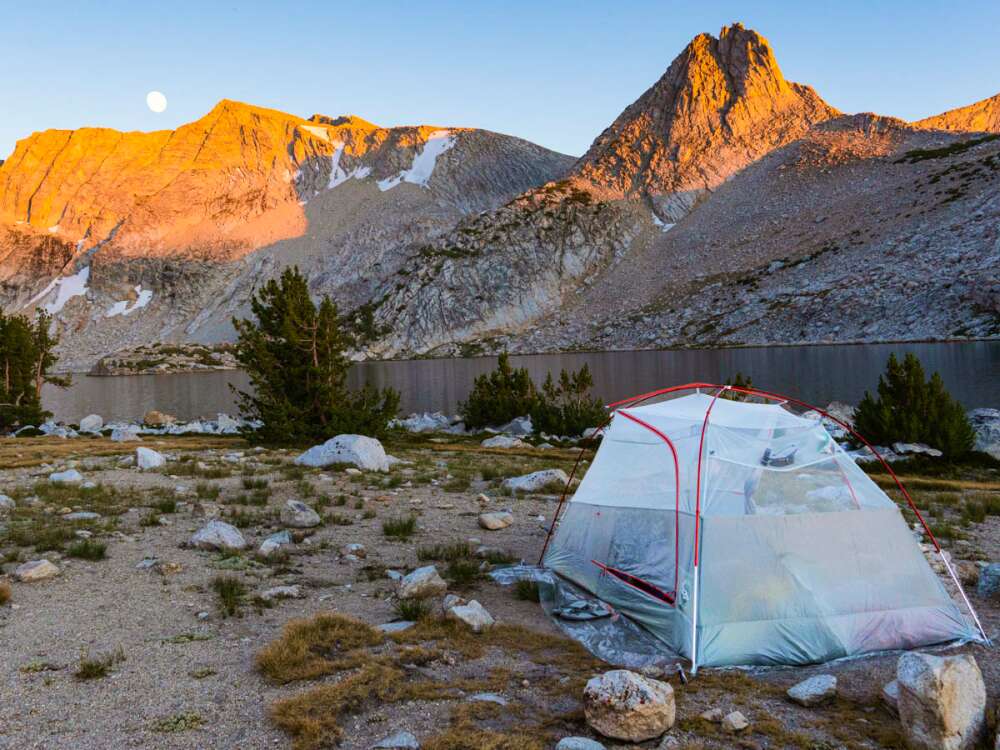
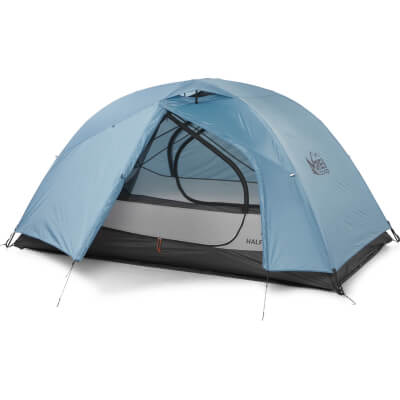
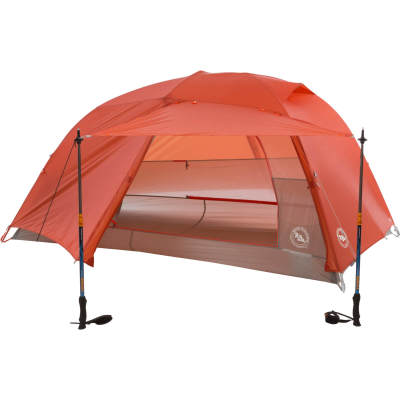
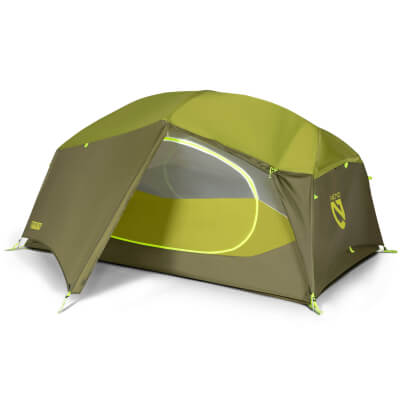
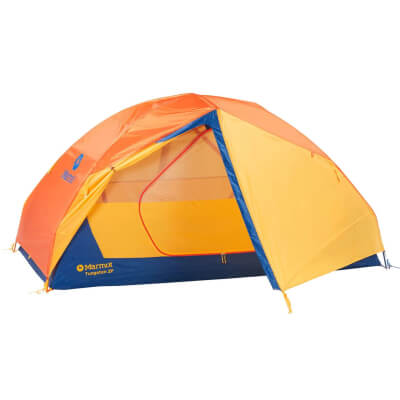
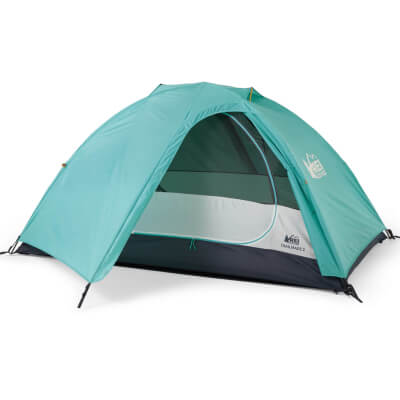
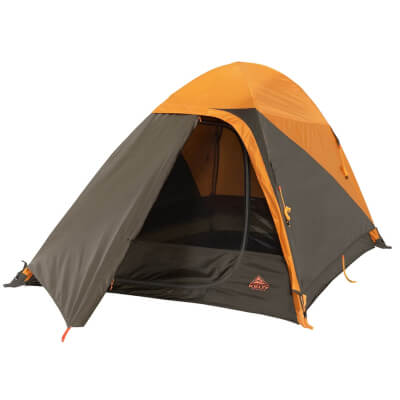
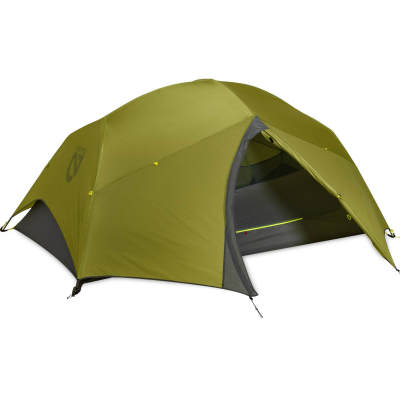
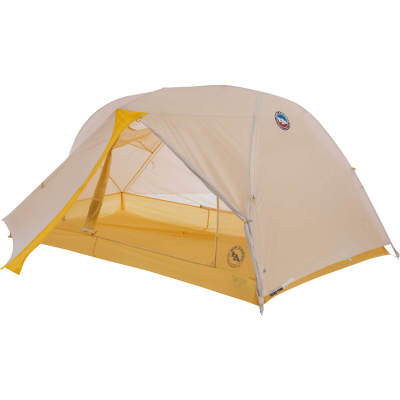
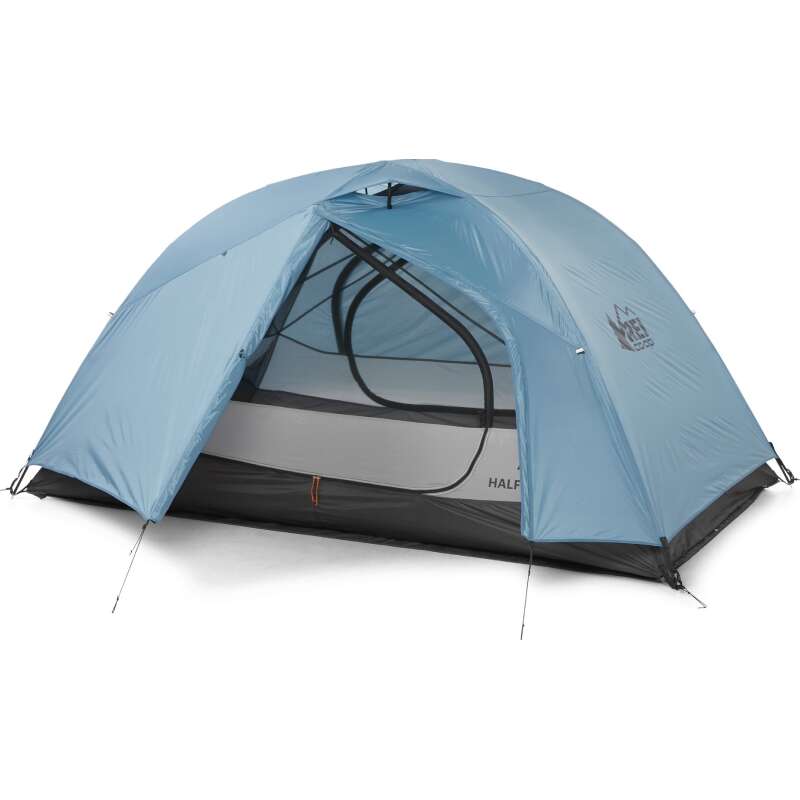
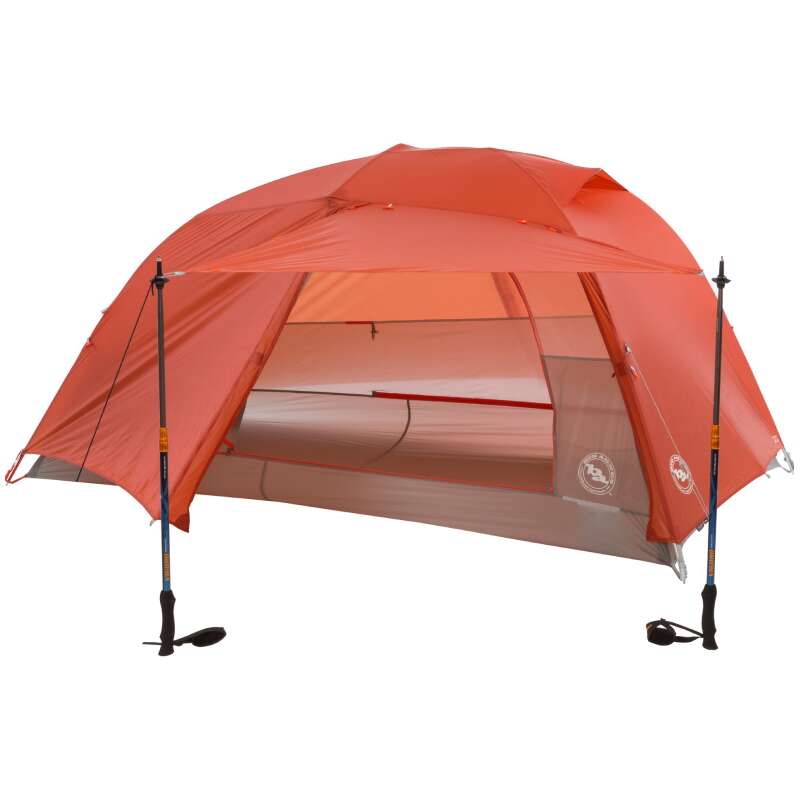
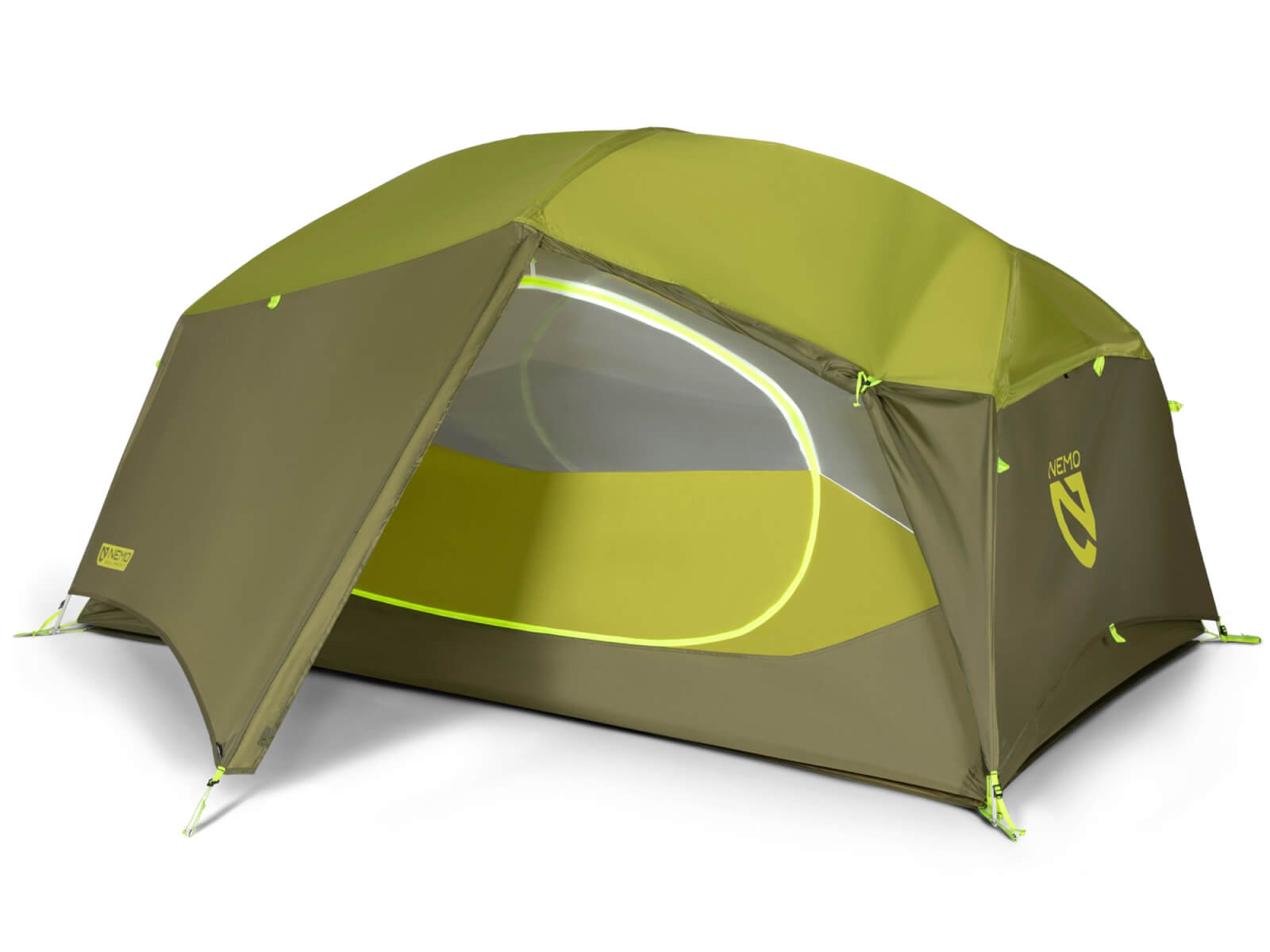
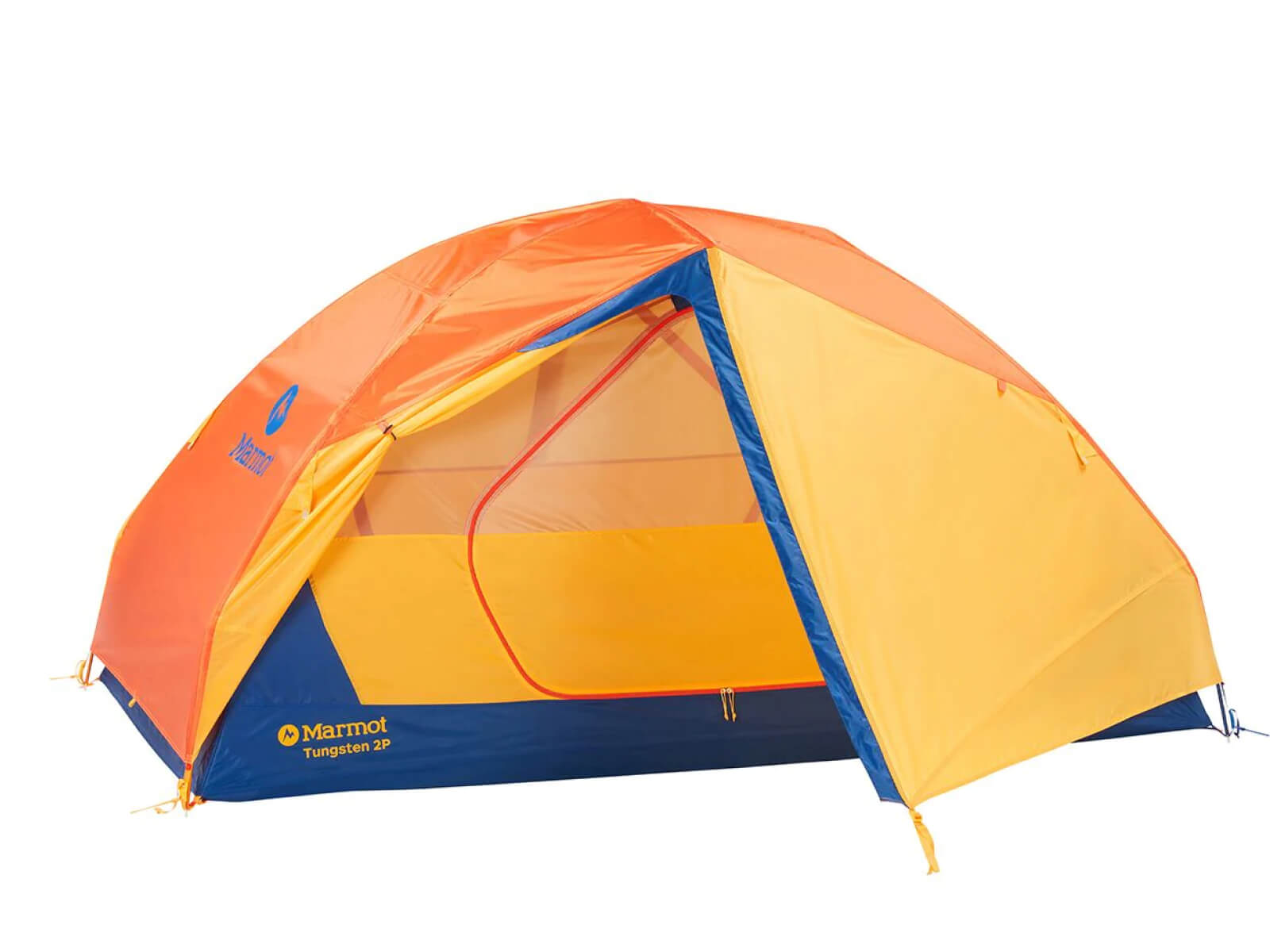
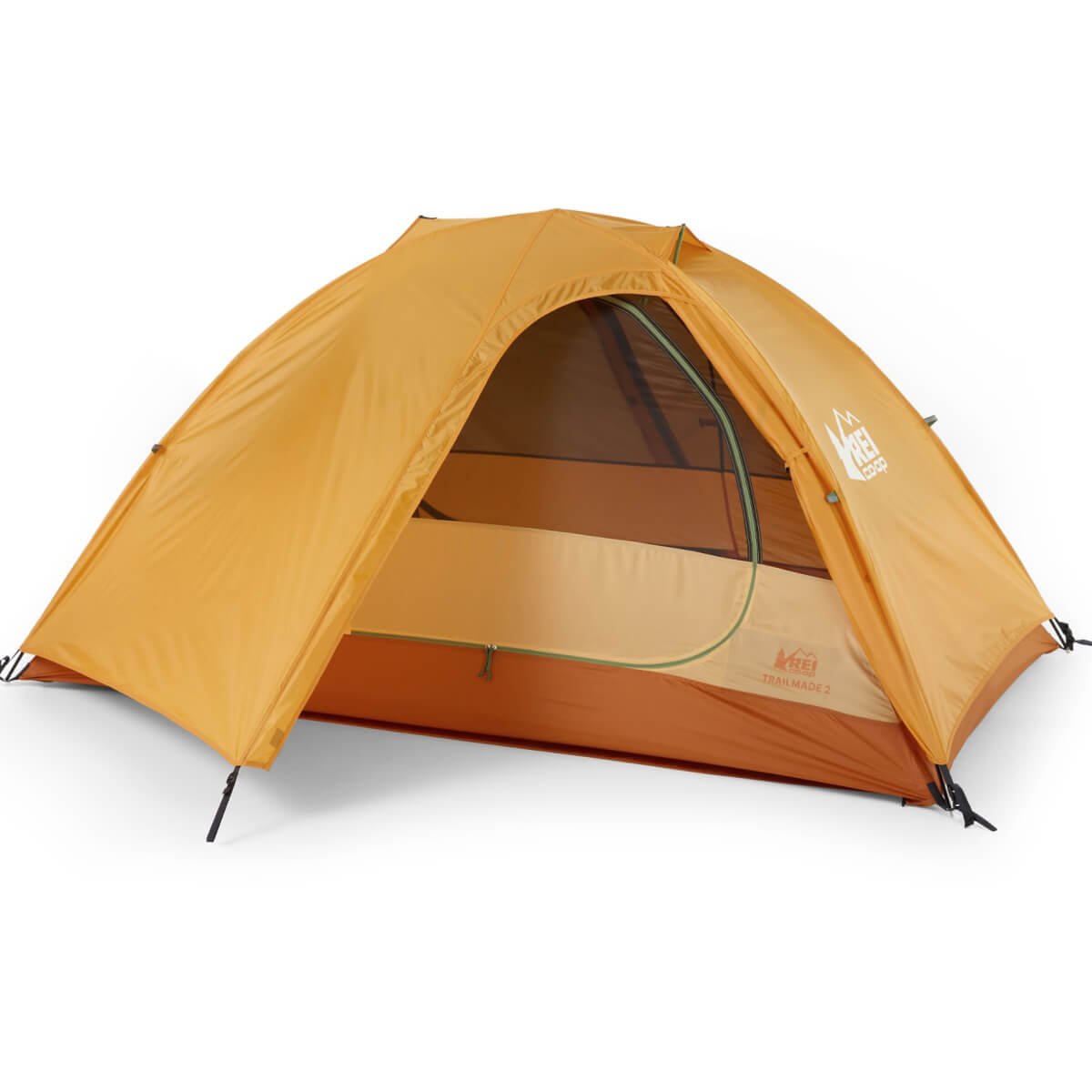
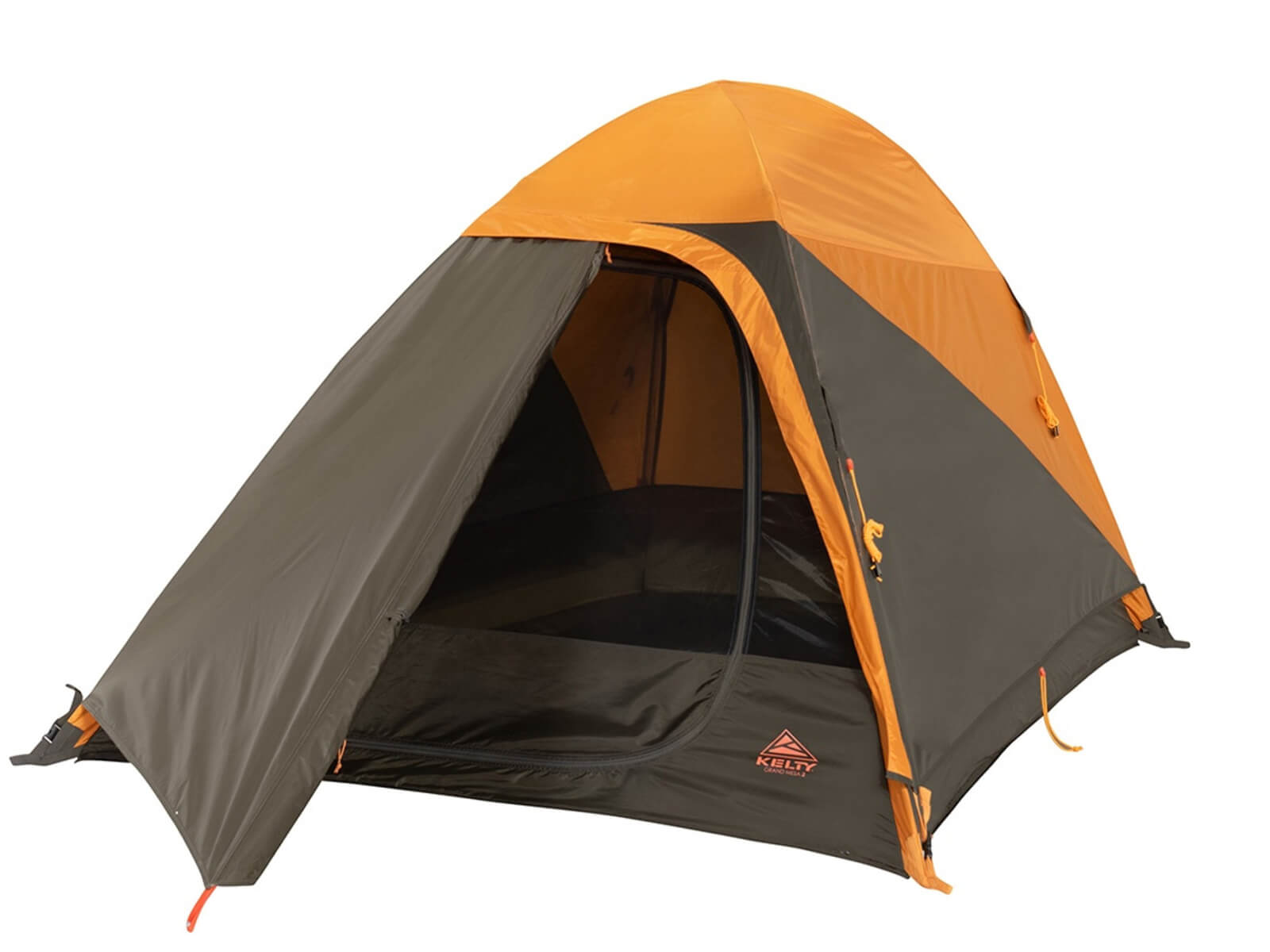

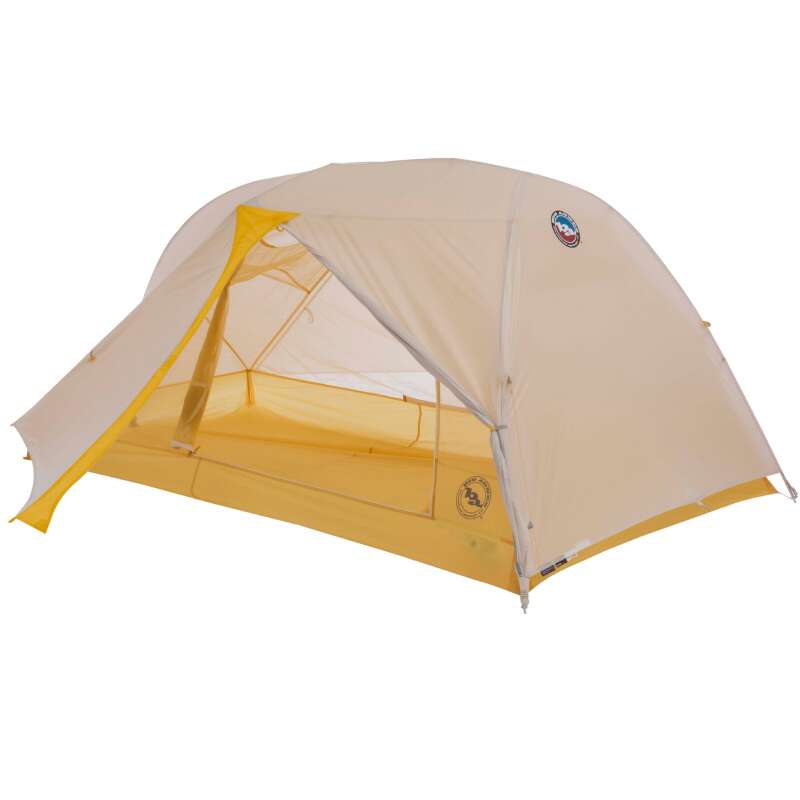
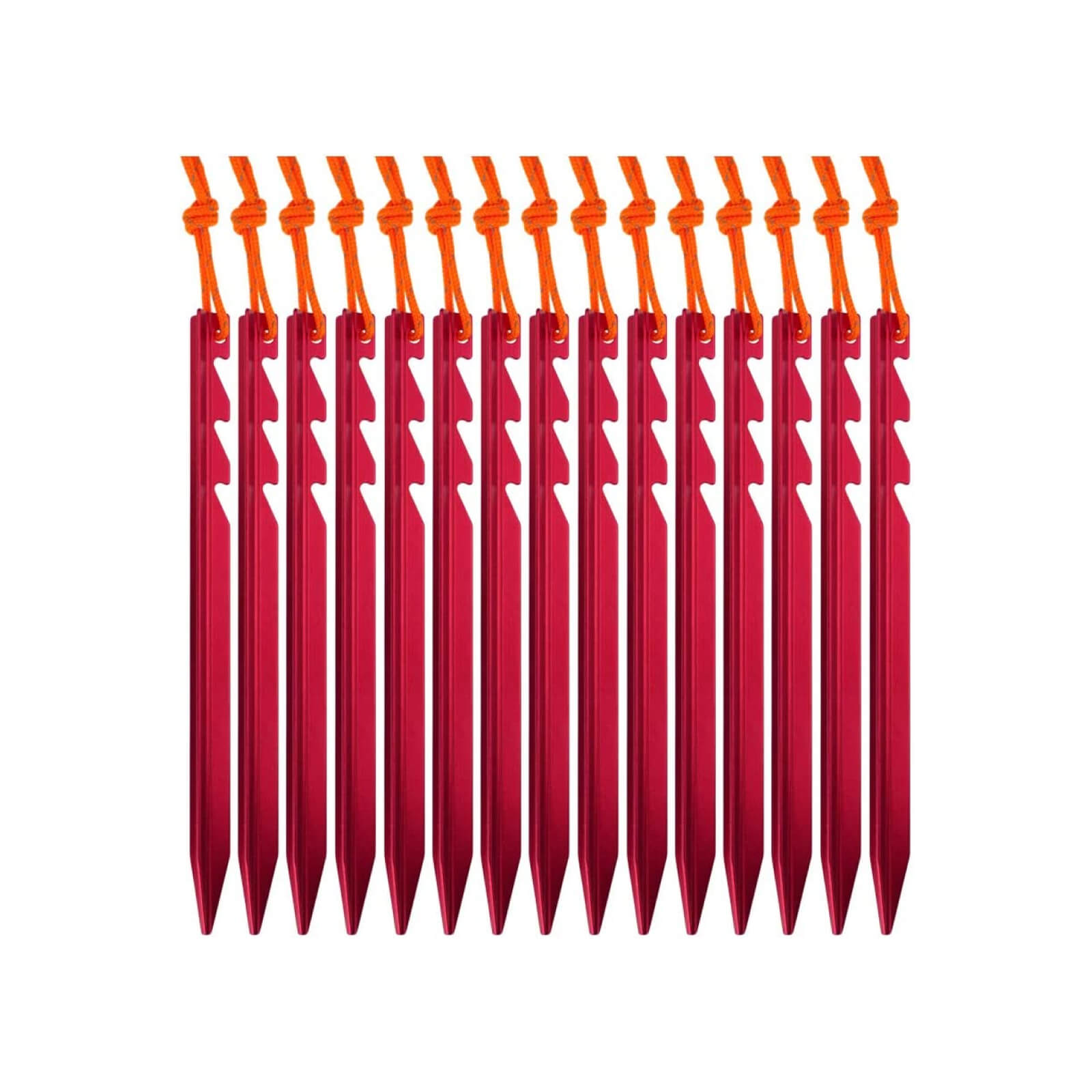
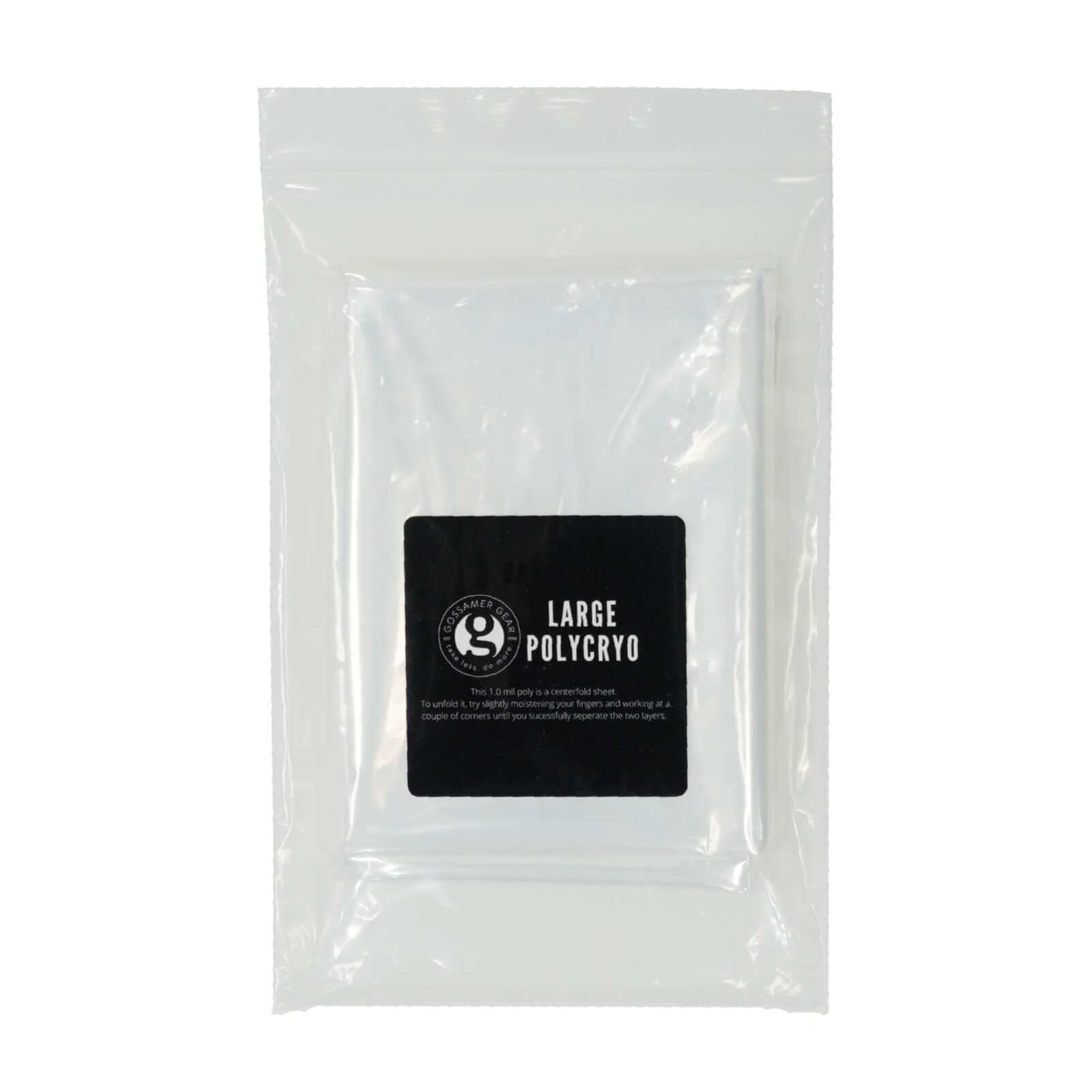
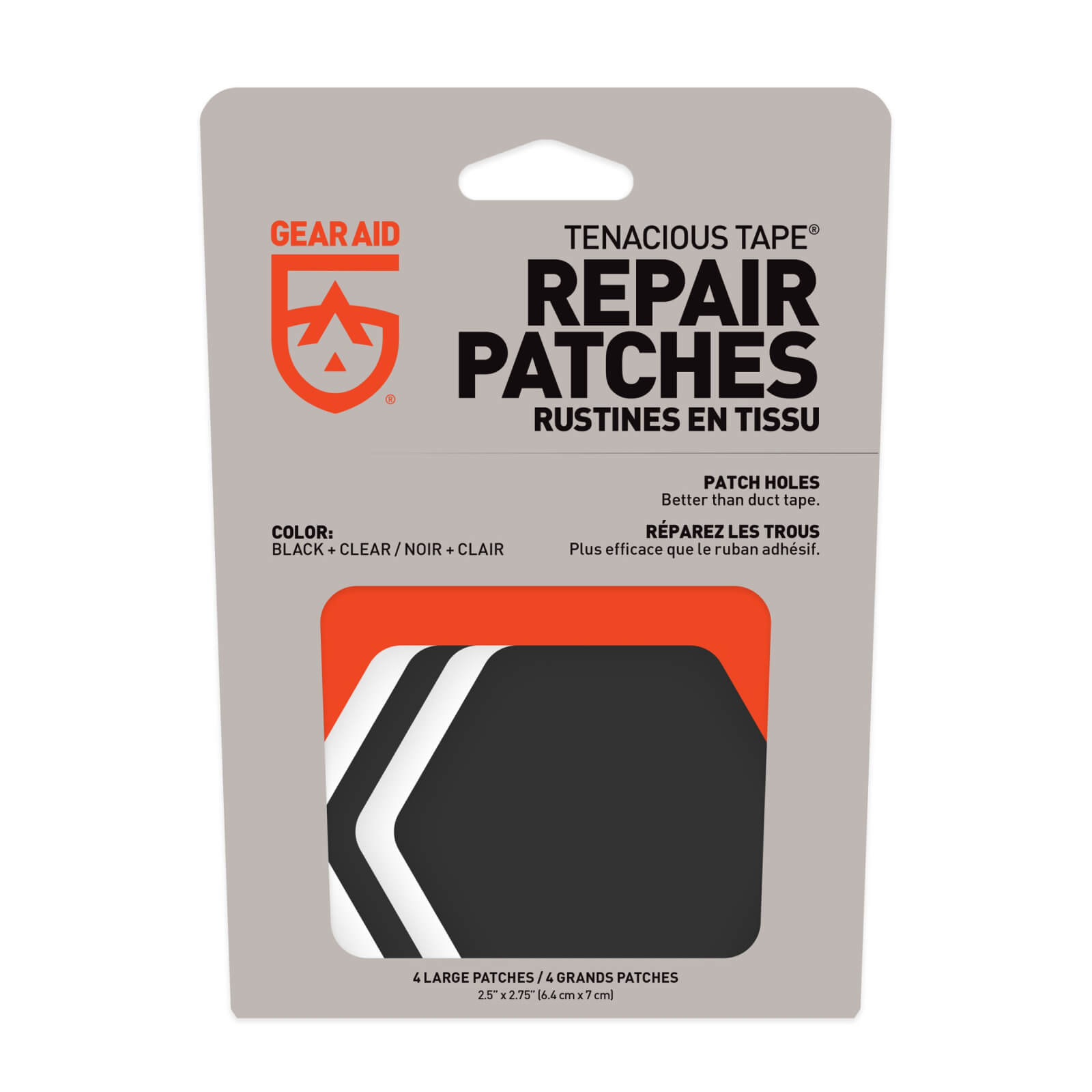
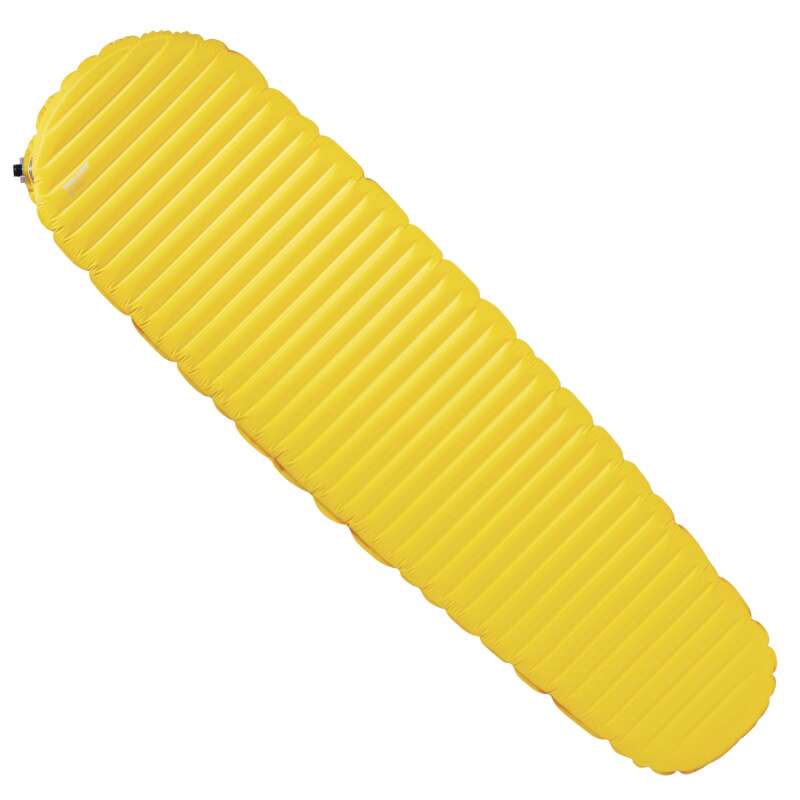
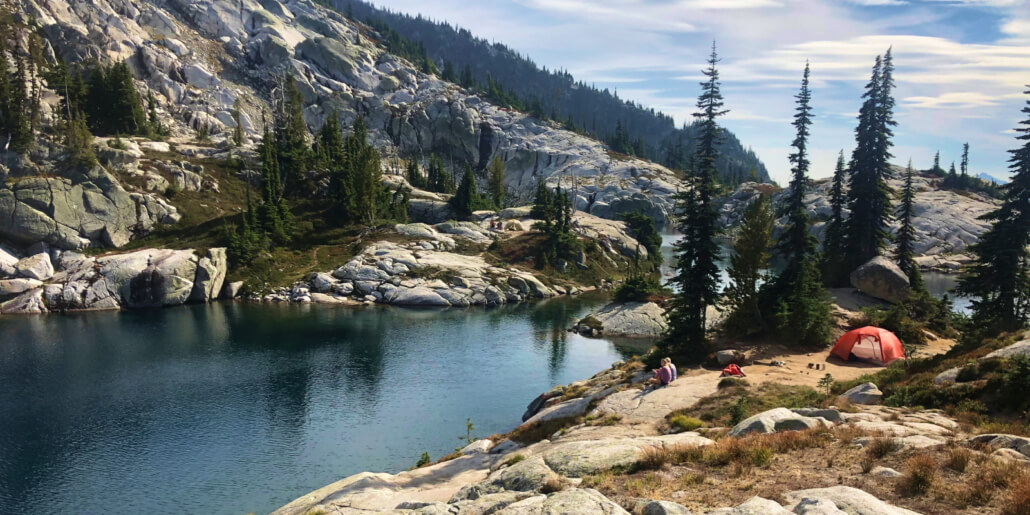
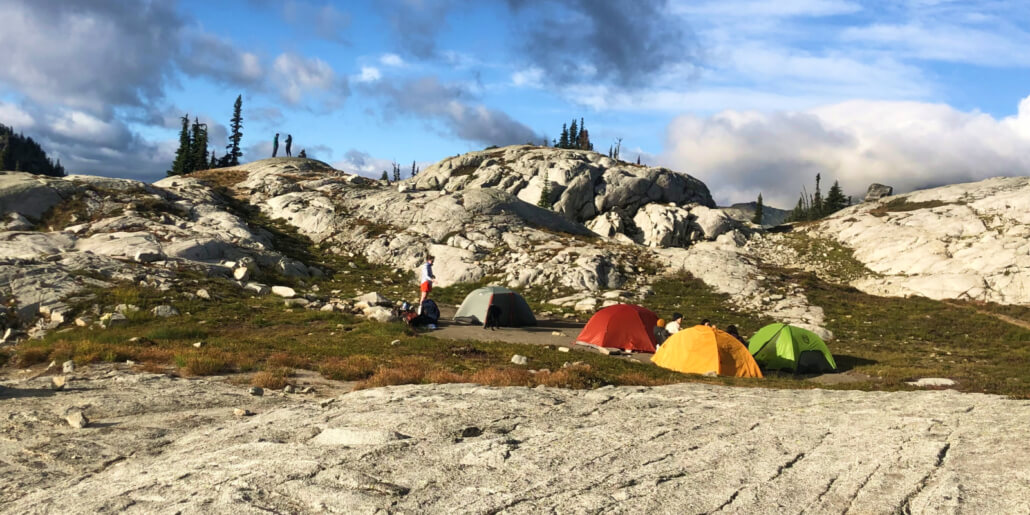
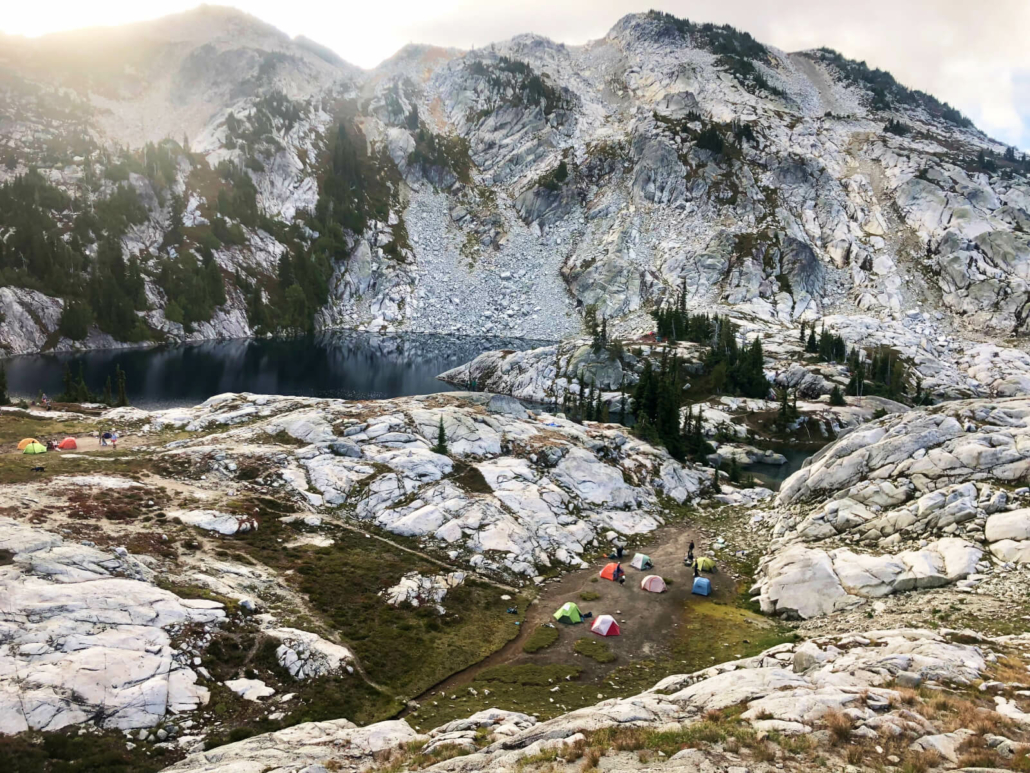
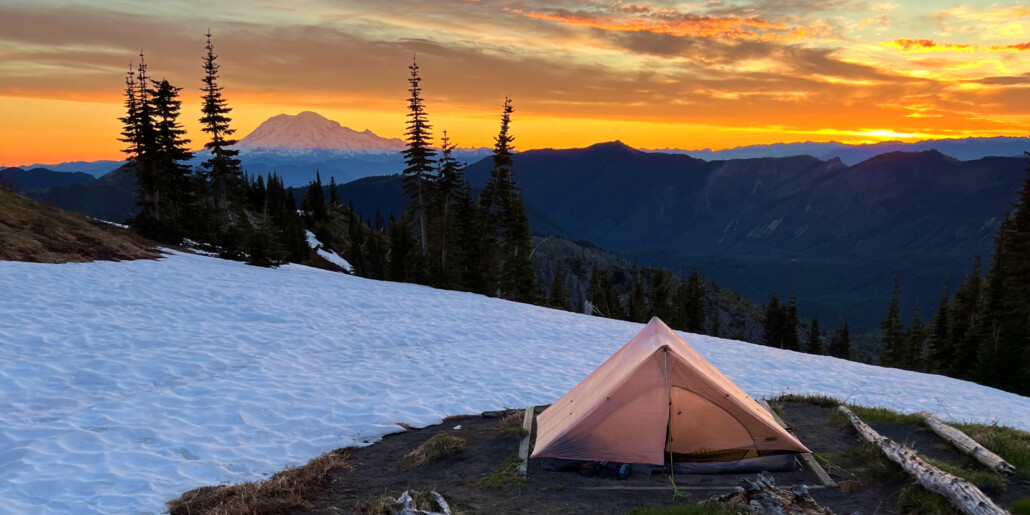
Share this entry